King & Country Jn041 Wwii Imperial Japanese Army Type 95 Ha-go Light Tank Mib
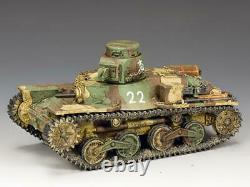
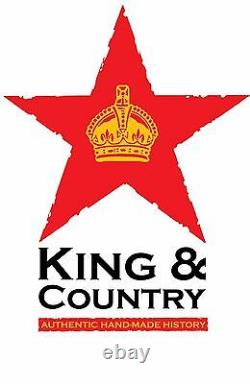
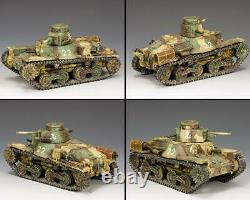
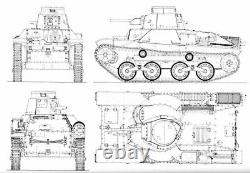
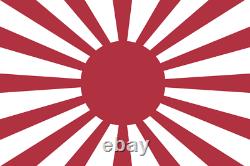
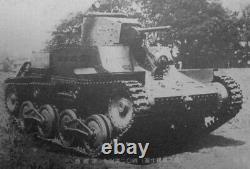
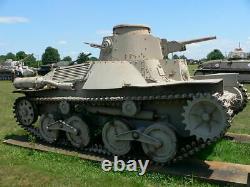
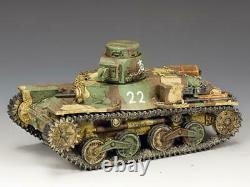


KING & COUNTRY JN041 WWII IMPERIAL JAPANESE ARMY "TYPE 95'HA-GO LIGHT TANK" (2nd VERSION) MIB! THE WAR IN THE PACIFIC SERIES. The first version of this Japanese light tank by King & Country had the tank commander perched in the open hatch of the vehicle leading the charge...
This time King & Country chose to close up the hatch and allow the commander to take cover inside the turret as the tank moves into action. This second-version'Ha-Go is numbered #22 providing the collector an opportunity to place another Japanese armoured vehicle into battle alongside the earlier and now-retired'Ha-Go #21. NEW 2018, BEING RETIRED , BUT AVAILABLE NOW FROM PICACHO PEAK COLLECTIBLES! Please Note: Image(s) in this listing of the WWII Japanese Type 95'Ha-Go' Light Tank in action, in Museum Settings, the Four (4) View Technical Drawing, or the Imperial Japanese Army Flag are for HISTORICAL PURPOSES ONLY AND ARE NOT INCLUDED WITH THE SALE OF THIS TYPE 95'Ha-Go' LIGHT TANK!MINT CONDITION IN THE ORIGINAL KING & COUNTRY BOX! In war there is no second prize for the runner-up. Imperial Japanese Army during World War II. The Imperial Japanese Army IJA.
Dai-Nippon Teikoku Rikugun; "Army of the Greater Japanese Empire" was the official ground-based armed force of the Empire of Japan from 1868 to 1945. It was controlled by the Imperial Japanese Army General Staff Office and the Ministry of War, both of which were nominally subordinate to the Emperor of Japan as supreme commander of the army and the navy. Later an Inspectorate General of Aviation became the third agency with oversight of the army. During wartime or national emergencies, the nominal command functions of the emperor would be centralized in an Imperial General Headquarter (IGHQ), an ad-hoc body consisting of the chief and vice chief of the Army General Staff, the Minister of War, the chief and vice chief of the Naval General Staff, the Inspector General of Aviation, and the Inspector General of Military Training. In 1941, the Imperial Japanese Army had 51 divisions.And various special-purpose artillery, cavalry, anti-aircraft, and armored units with a total of 1,700,000 men. At the beginning of the Second World War, most of the Japanese Army (27 divisions) was stationed in China. A further 13 divisions defended the Mongolian border, due to concerns about a possible attack by the Soviet Union. From 1942, soldiers were sent to Hong Kong (23rd Army), the Philippines (14th Army), Thailand (15th Army), Burma (15th Army), Dutch East Indies (16th Army), and Malaya (25th Army).
By 1945, there were 5.5 million men in the Imperial Japanese Army. The lack of supplies caused large numbers of fighter aircraft to become unserviceable due to the absence of spare parts. This lack of supplies also resulted in "as many as two-thirds of Japan's total military deaths to be the result of illness or starvation". Imperial Japanese Army Type 95'Ha-Go Light Tank. Used by the Imperial Japanese Army.
During the Second Sino-Japanese War. At Nomonhan against the Soviet Union, and in World War II. It proved sufficient against infantry but, like the American M3 Stuart light tank. Was not designed to face other tanks in combat. The Type 95 was a 7.4-ton vehicle with a complement of 3 crewmen: a commander, a hull machine gunner, and a driver.
Only the commander was seated in the turret, thus he was responsible for observation, loading, aiming, firing the main gun, as well as decision-making and commanding the crew. The hand-operated turret was small and extremely cramped.
The primary armament of the most produced version was a Type 94 37mm tank gun not to be confused with a barrel length of 46.1 inches, and could be elevated between 15 to +20 degrees. The tank carried two types of 37mm ammunition, the high-explosive and armor-piercing rounds. For the latter, muzzle velocity was 580 m/s (1,900 ft/s) and armor penetration was 36 mm (1.4 in) at a distance of 275 m (902 ft).
As the tide of the war turned against Japan, the Type 95s were increasingly expended in Banzai charges. Or were dug-in as pillboxes in static defense positions in the Japanese-occupied islands. During the Battle of Tarawa. Seven entrenched Type 95s of the 7th Sasebo SNLF opposed the American landings.
Those seven, along with the two on nearby Makin Island. During World War II approximately 2,300 Type 95'Ha-Go light tanks were produced. Making it the most numerous Japanese armoured fighting vehicle of the Second World War. ADDITIONAL NOTE: WHENEVER POSSIBLE WE WILL INCLUDE A KING & COUNTRY COLLECTORS EDITION. BROCHURE OR LEAFLET THAT REFLECTS THE RELEASE DATE OF THE LISTED ITEM. We will do our best to answer your questions within 24 hours; however there may be times when it takes a little longer; please be patient, we will answer all questions. Will Make Every Effort to Gain Your Trust & Respect and Will Do Everything We Can to Keep It! It lets us know the kind of job we are doing and also helps other customers to know what to expect from.. Note: Although we have never visited Pearl Harbor nor any of the areas of the Pacific Theatre, we have visited the Normandy region on numerous occasions, including all five of the D-Day Landing Beaches and many of the towns and museums inland, and most, if not all of the destroyed German bunkers. In addition, we have also visited London, England and have toured the Churchill War Rooms, Imperial War Museum and outside of London, the sprawling fields of IWM Duxford Air Field. Although sometimes not forefront in thoughts about WWII air wars, the winter of 1944-45, once the fog and heavy cloud cover had disappeared, proved a pivotal time during the Battle of the Bulge as Allied aircraft were able to attack German Armor and troops on the ground. In visiting the Bastogne area, including the Baugnez'44 Museum, the site of the Malmedy Massacre, there are references to the importance of the air war, especially in the latter stages of this decisive conflict. In addition, should you ever want to visit the area in and around London, Duxford, Cambridge, Normandy or Bastogne, we would be willing to share our experiences or trip itinerary with you, which may help to make your travel through the area easier and perhaps make the historical experience more valuable. We have been a successful retailer with King & Country since 1999, marketing their line of connoisseur.Quality military miniatures, vehicles, aircraft and scenery pieces. We are listed on the King & Country website as an authorized & licensed dealer and. We welcome your DIRECT CONTACT for any of these miniatures that are. In addition, we also offer a unique selection of WWII Militaria items; Original and Reproduction WWII U.
And German Helmets, Uniforms and Equipment/Gear and Museum Quality Restored Original U. M-1 Helmets and Converted U. M-2 & M-1C Paratrooper Helmets. The item "KING & COUNTRY JN041 WWII IMPERIAL JAPANESE ARMY TYPE 95 HA-GO LIGHT TANK MIB" is in sale since Thursday, March 25, 2021. This item is in the category "Toys & Hobbies\Toy Soldiers\1970-Now". The seller is "devilforest" and is located in Huntingdon Valley, Pennsylvania. This item can be shipped to United States, Canada, United Kingdom, Denmark, Romania, Slovakia, Bulgaria, Czech republic, Finland, Hungary, Latvia, Lithuania, Malta, Estonia, Australia, Greece, Portugal, Cyprus, Slovenia, Japan, China, Sweden, South Korea, Indonesia, Taiwan, Thailand, Belgium, France, Hong Kong, Ireland, Netherlands, Poland, Spain, Italy, Germany, Austria, Bahamas, Israel, Mexico, New Zealand, Philippines, Singapore, Switzerland, Norway, Saudi arabia, Ukraine, United arab emirates, Qatar, Kuwait, Bahrain, Croatia, Malaysia, Brazil, Chile, Colombia, Costa rica, Dominican republic, Panama, Trinidad and tobago, Guatemala, El salvador, Honduras, Jamaica, Antigua and barbuda, Aruba, Belize, Dominica, Grenada, Saint kitts and nevis, Saint lucia, Montserrat, Turks and caicos islands, Barbados, Bangladesh, Bermuda, Brunei darussalam, Bolivia, Ecuador, French guiana, Guernsey, Gibraltar, Guadeloupe, Iceland, Jersey, Jordan, Cambodia, Cayman islands, Liechtenstein, Sri lanka, Luxembourg, Monaco, Macao, Martinique, Maldives, Nicaragua, Oman, Peru, Pakistan, Paraguay, Viet nam, Uruguay, Russian federation.- Gender: N/A
- Modified Item: No
- Country/Region of Manufacture: Hong Kong
- Material: HAND-PAINTED POLYSTONE, PEWTER & WHITE METAL
- Size: 1/30 (60 mm)
- Soldier Type: WWII IMPERIAL JAPANESE TYPE 95 'HA-GO LIGHT TANK
- Type: WWII IMPERIAL JAPANESE TYPE 95 'HA-GO LIGHT TANK
- Year: 2018
- MPN: JN041
- Brand: KING & COUNTRY
- Recommended Age Range: COLLECTOR


